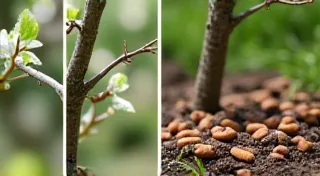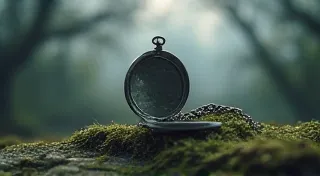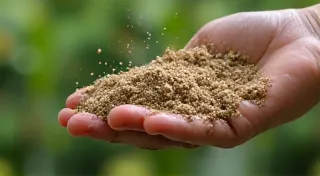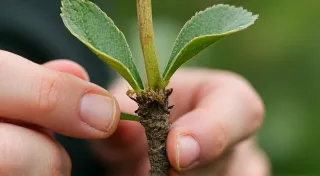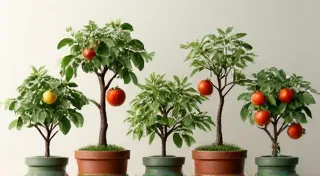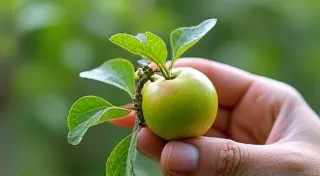Creating a Miniature Orchard in Containers: Design & Inspiration
Imagine stepping onto your patio or balcony and being surrounded by the sights and smells of a blossoming fruit orchard – even if you live in an apartment! Creating a miniature orchard in containers is entirely possible, and a wonderfully rewarding experience. This guide will provide design ideas and inspiration to help you build your own personal fruit haven.
Planning Your Miniature Orchard
Before you start selecting trees, consider the space you have available. A small balcony might accommodate just a few dwarf fruit trees, while a larger patio allows for more variety and a more expansive feel. Think about the sun exposure your space receives – most fruit trees need at least 6-8 hours of direct sunlight daily. Also, consider the visual appeal and overall aesthetic you want to achieve. Proper placement requires careful consideration; sometimes, understanding your space’s microclimate can be the difference between thriving fruit and stunted growth, and we’re not just talking about sunlight. Understanding your space’s unique conditions is key, and you can delve deeper into this with a guide to cartography of sunlight: mapping microclimates for container fruit bounty.
Tree Selection is Key: The cornerstone of a miniature orchard is, naturally, the dwarf fruit trees themselves. Look for varieties specifically grafted onto dwarf rootstock. Common choices include:
- Dwarf Apple Trees: 'Gala,' 'Honeycrisp,' and 'Fuji' are popular, offering beautiful blooms and delicious fruit.
- Dwarf Peach Trees: 'Bonanza' and 'Elberta' are excellent choices for container growing.
- Dwarf Cherry Trees: 'Lapins' and 'Stella' are self-pollinating varieties, making them ideal for smaller spaces.
- Dwarf Pear Trees: 'Bartlett' and 'Moonglow' can thrive in containers.
- Dwarf Citrus Trees: Lemons, limes, and oranges add a touch of the tropics and fragrance to your orchard.
Pollination Matters: Some fruit trees are self-pollinating, meaning they don’t need another tree to produce fruit. Others require cross-pollination. Research the specific requirements of the varieties you choose. If cross-pollination is necessary, ensure you have a compatible variety nearby or be prepared to hand-pollinate. The health of your trees depends on proper nutrition, and understanding how to best feed them is crucial. For those looking to improve their orchard's vigor, consider a step-by-step guide to fertilizing dwarf fruit trees in containers.

Design Ideas for Visual Appeal
Beyond simply planting trees, consider these design elements to elevate your miniature orchard.
Layered Heights
Vary the height of your containers to create visual interest. Use taller planters for trees like peach or apple and shorter ones for citrus. This layering adds depth and a more established orchard feel.
Container Choice
The containers themselves contribute significantly to the overall design. Terracotta pots provide a classic, rustic look. Glazed ceramic pots offer a more refined aesthetic. Consider the size of the mature tree when selecting container size – larger trees need larger pots to accommodate their root systems. Ensure all containers have drainage holes. The art of propagation can be surprisingly accessible, even for beginners. For those interested in expanding their collection through propagation, a look at DIY grafting: propagating dwarf fruit trees in containers can be incredibly rewarding.

Creating Pathways & Focal Points
If space allows, create a small pathway between your trees. This enhances the feeling of wandering through an orchard. Designate a focal point – perhaps a particularly beautiful tree or a decorative bench – to draw the eye.
Adding Companion Plants
Integrate companion plants around your fruit trees. Lavender, rosemary, and thyme not only look beautiful but also attract pollinators and can even help deter pests. Fruit trees require regular maintenance to remain productive and healthy, but knowing exactly when and how to take care of them can be tricky. A comprehensive, seasonal guide to pruning and fertilizing dwarf fruit trees in containers can be invaluable.
Seasonal Color
Add seasonal color with annuals or perennials. Pansies in the spring, petunias in the summer, and mums in the fall provide vibrant accents and extend the visual appeal of your miniature orchard throughout the year.

Maintenance Tips for Success
Creating a beautiful miniature orchard is just the first step. Regular maintenance is essential for healthy trees and abundant fruit. This includes consistent watering, fertilizing, pruning, and pest control. Research the specific needs of each variety to ensure you're providing optimal care. Beyond the basics, understanding the nuances of each season's care requirements is key to success. Consider factors like temperature fluctuations, sunlight intensity, and humidity levels. These variables directly impact the health and productivity of your trees, and adapting your care routine accordingly is crucial.
Pruning, in particular, is an art and a science. Knowing when and how to prune your dwarf fruit trees will encourage vigorous growth, increase fruit production, and maintain their desired shape. Improper pruning can stunt growth and reduce yields. Similarly, fertilization needs vary depending on the tree's age, the type of fruit it bears, and the soil conditions in your containers. Too much or too little fertilizer can have detrimental effects.
Pest control is another critical aspect of orchard maintenance. Regularly inspect your trees for signs of pests and diseases. Implement preventative measures, such as introducing beneficial insects or using organic pesticides, to keep your trees healthy. Remember, a healthy tree is more resistant to pests and diseases.
Watering is also crucial for the success of your miniature orchard. Dwarf fruit trees in containers tend to dry out faster than those in the ground, so it's important to water them regularly, especially during hot and dry weather. Check the soil moisture before watering and only water when the top inch of soil is dry.
With a little planning and care, you can transform your patio or balcony into a thriving miniature orchard, a delightful oasis of blossoms, fragrance, and delicious fruit!
